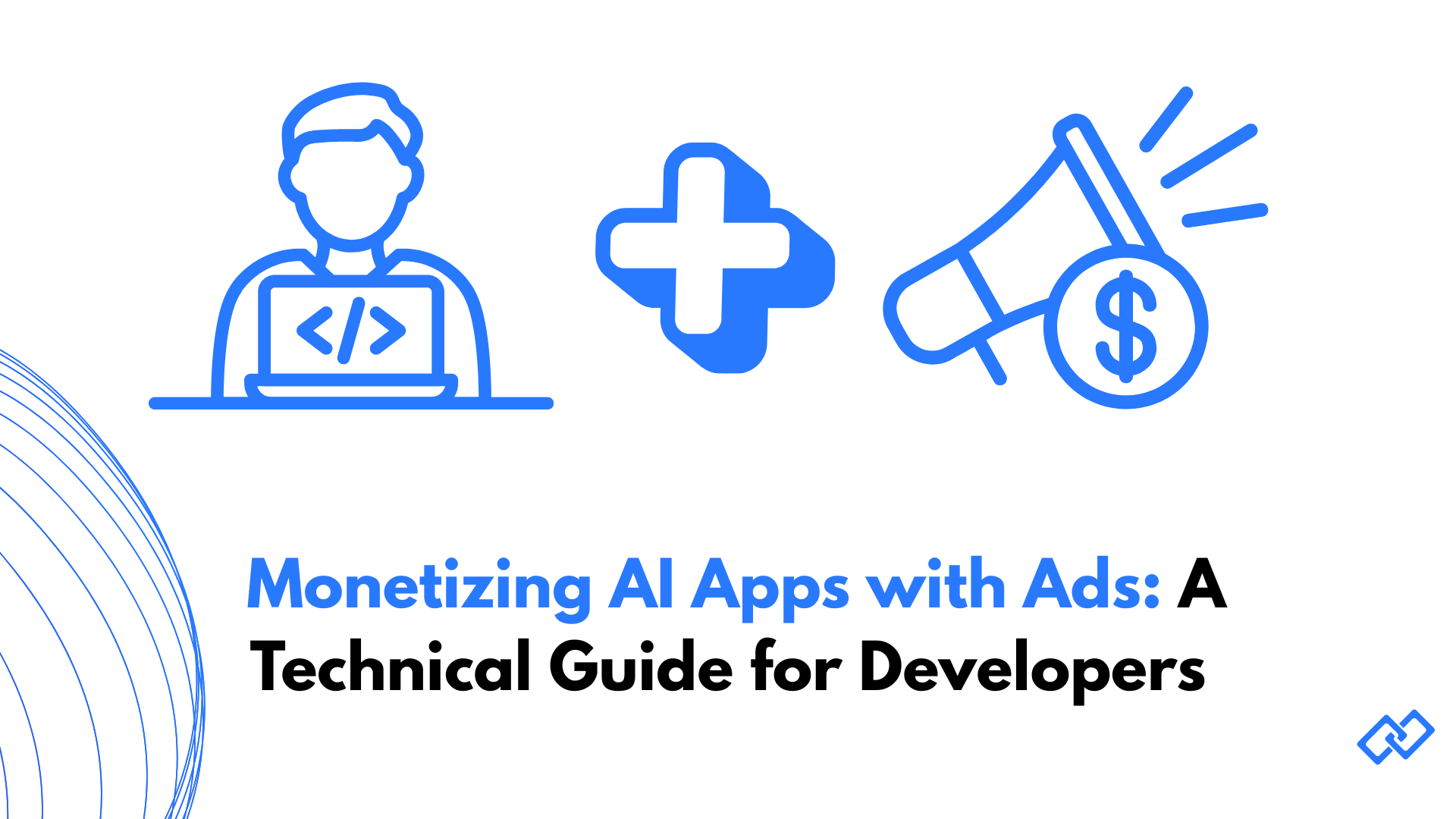Monetizing AI Apps with Ads: A Technical Guide for Developers

Introduction: Why Developers Need New Revenue Models
AI apps are booming. From productivity assistants to niche chatbots, developers worldwide are shipping projects built on frameworks like LlamaIndex, Haystack, and even directly on the ChatGPT API.
But there's a catch: monetization is hard.
Subscriptions are the default choice, but:
- Users are suffering from "subscription fatigue."
- Running LLMs is expensive (OpenAI API pricing).
- Indie devs rarely have the reach to convert free users into paid ones at scale.
That's why ads are emerging as a developer-friendly, scalable model to keep apps free while still generating revenue.
In this guide, we'll explore how you — as a developer — can implement ads in AI apps without losing user trust or overcomplicating your architecture.
1. Why Ads in AI Apps Make Sense
Traditional apps have always relied on ads (think Google AdMob or Facebook Ads). Conversational AI apps are no different.
The difference? User intent is sharper.
Someone asking a chatbot "What's the best CRM for freelancers?" is closer to a decision than someone casually Googling.
That makes ad placement inside LLMs extremely high-value.
For devs, this means you can:
- Keep your app free → increase adoption.
- Monetize naturally → ads show when users are asking relevant questions.
- Avoid paywalls → reduce churn and barriers to entry.
2. Ad Placement Models for AI Apps
There are three main ways to integrate ads into conversational flows:
Inline Ads
Ads are embedded directly in the chatbot's response.
Example: "Here are the top tools… Sponsored: Try TaskFlow for freelancers."
Best for: Q&A or product comparison bots.
Sidecar Ads
Ads appear next to the chatbot window (UI-level, not inside the text).
Example: a right-hand card with a product suggestion.
Best for: Cleaner for apps that prioritize neutrality.
Post-Answer Callouts
Ads appear after the chatbot completes its reply.
Example: "Sponsored: Need a hotel booking? Check out QuickStay."
Best for: Lowest friction approach.
Each model has trade-offs. Inline feels natural but requires careful disclosure. Sidecar is safer for trust. Post-answer is lowest friction.
3. Technical Challenges to Consider
Before adding ads, devs should be aware of key challenges:
Disclosure & Trust
Ads must be clearly marked as "sponsored." See FTC advertising guidelines.
Output Control
LLMs may hallucinate or mix ad content incorrectly unless ads are injected via structured logic.
Relevance Filtering
Ads need to match context (you don't want a VPN ad inside a fitness chatbot unless it makes sense).
Latency
Pulling ads in real-time shouldn't slow down the chatbot experience.
4. A Developer-Friendly Architecture
Here's a simple way to add ads to your AI app:
Step 1: User Query → LLM Response
Capture user input and get the AI's output (via LlamaIndex, Haystack, or ChatGPT API).
Step 2: Context Extraction
Use keyword extraction or embeddings (see Hugging Face Transformers) to detect intent.
Step 3: Ad Matching
Query your ad provider's API (or Adsbind's upcoming SDK) for relevant sponsored content.
Step 4: Response Assembly
Merge the LLM's output with the sponsored snippet → deliver to user.
5. Avoiding Developer Pitfalls
- Don't hardcode ads. Use APIs for dynamic matching.
- Don't over-serve ads. Keep frequency reasonable (e.g., 1 in 5 responses).
- Don't hide sponsorship. Users must know what's paid.
- Don't slow down responses. Cache ads or pre-load inventory to keep latency low.
6. Future-Proofing Your App
The landscape is moving fast:
- Expect multimodal ads (text + image + video).
- Expect standardized APIs (similar to how Google AdSense standardized web ads).
- Expect ethical frameworks around fairness and manipulation in AI recommendations.
Developers who start experimenting now will have a huge advantage once the ecosystem matures.
Final Thoughts
For developers, monetizing AI apps doesn't need to mean locking features behind a paywall. Ads represent a scalable, user-friendly model that lets apps remain free while still generating revenue.
The key is to:
- Choose the right placement model (inline, sidecar, or post-answer).
- Build a simple but reliable ad injection pipeline.
- Respect transparency and user trust.
👉 If you want to skip the complexity of building ad infrastructure from scratch, keep an eye on Adsbind — designed to give developers an API-first way to plug contextual ads directly into AI apps.